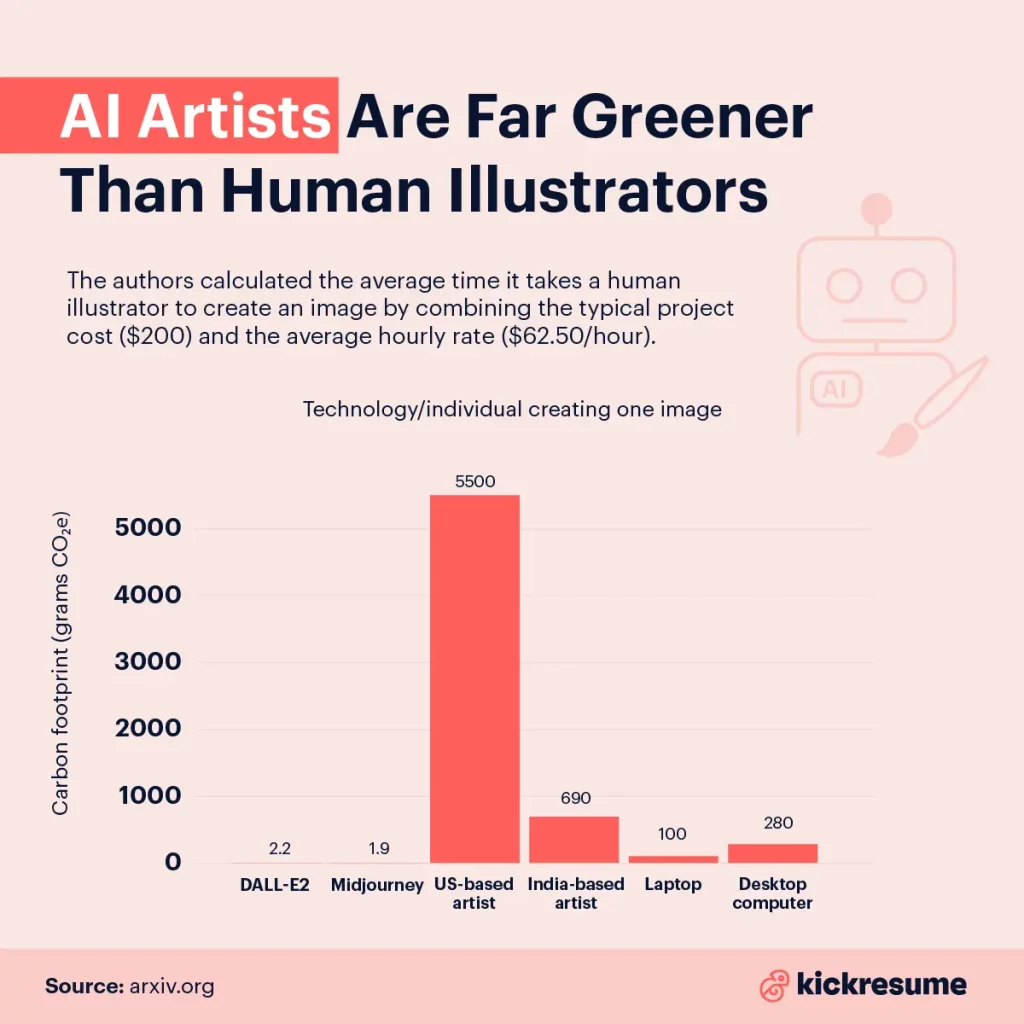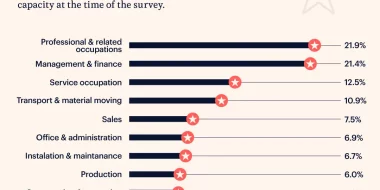New Data: AI Artists Are Far Greener Than Human Illustrators
In our earlier infographic, we explored how AI text generators leave a way smaller carbon footprint than humans. And as we continue to explore the tech-driven green revolution, we turn to another creative area where AI is making strides — illustrating.
Just like writing, could AI be marking its territory as the greener artist as well? And if yes, should human illustrators take a backseat in the future?
The thought-provoking study, “The Carbon Emissions of Writing and Illustrating Are Lower for AI than for Humans” suggests that AI image generators are indeed leaving a much smaller carbon footprint than us.
But how much smaller is that footprint? And is the comparison even in the same ballpark?
AI illustrators paint a green future — with 310-2900 times less co2e
Here’s how AI image generators compare to human artists in terms of carbon footprint:
- DALL-E2: Featuring on par computing power with ChatGPT, the digital doodler DALL-E2 leaves a footprint of roughly 2.2g CO2e.
- Midjourney: We gauge Midjourney’s impact based on CEO David Holz’s hint at its massive computing power. To produce an image, it runs thousands of trillions of operations for about 40 seconds on systems like Google’s Compute Engine. The result? A relatively slim carbon footprint of 1.9 grams CO2e.
- US-based artist: An artist, based in the US, sketches for an average of 3.2 hours to breathe life into an image. How did the authors land on this number? On average, it costs about $200 for an illustration project. Meanwhile, the typical hourly pay for an illustrator stands at $62.50. By dividing the total project cost by the hourly rate, the study estimates that a human illustrator would clock in about 3.2 hours per illustration. And the carbon track they leave? Approximately 5500 grams CO2e for each masterpiece.
- India-based artist: In contrast, over in India, known for its low per capita carbon impacts among large nations, the footprint shrinks to a modest 690g CO2e. Yet, even this smaller footprint can’t outstrip the efficiency of AI systems.
- Creating an image on a laptop for 3.2 hours emits 100 grams CO2e, while a desktop emits 280 grams CO2e in the same period.
Crunching these numbers, we realize that AI image generators outshine human artists by emitting a staggering 310 to 2900 times less CO2e for each image they create.
Let’s not forget the broader social implications!
Despite the stark difference in carbon emissions between AI and humans, we don’t really drop our jaws in surprise. Not quite. After all, human artists need more than just a power switch. For starters we need food, rest, a living space, all adding to a heftier carbon footprint.
But let’s not rush to swap human artists for bots just yet. The study doesn’t really consider the broader social implications — potential job losses, legal issues, or growing demand for AI services.
Also, let’s not overlook the elephant in the art studio — the qualitative aspect of artwork remains outside this study’s frame.
We may agree that while AI may win in the speed-and-emissions race, artistry is more than a numbers game. And as the study suggests, a blend of human touch and AI efficiency can be the winning formula. The formula where AI helps pitch ideas, and humans perfect the final illustration with their flair.
Interested in more data? Explore our #kickdata stats for a closer look at the job market trends.



